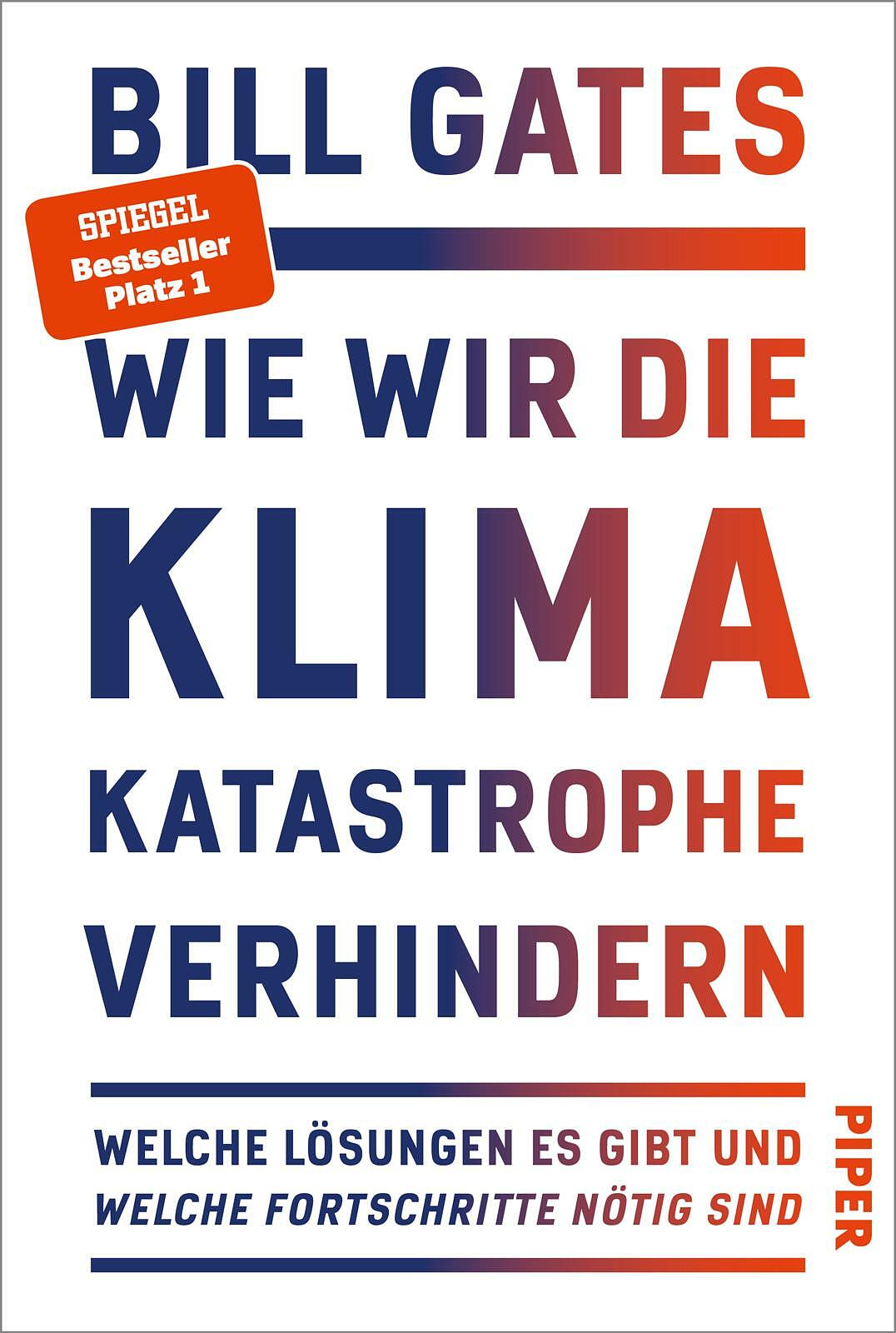
Review of a book entitled “How We Prevent a Climate Catastrophe”
Bill Gates introduces a book that starts with some ambition and self-confidence. According to his own admission, the author proposes a forward-looking strategy to prevent climate catastrophe and “encourage the whole world to adopt effective plans to deal with climate change”. This shows some rudeness, given that an entire group of scholars have devoted themselves to the topic, it has undoubtedly reached politics and many players have been looking for ways to master the increasingly pressing problem for decades.
Missing aha experience
So you expect a lot when you open the book – but unfortunately no real aha experience. The work turned out to be a generally understandable summary of the current state of knowledge and known political debates, than one finds a “future-oriented strategy” previously overlooked.
Gates focuses on the necessity, derived from climate scenario modeling, to reduce man-made carbon dioxide2– Reducing emissions to zero by 2050. After a brief explanation of the scientific background of human-induced climate change, five chapters form the core of the work, where the author describes the main sources of human greenhouse gas exchange and calls for an approach to reduce them in the points concerned. The compilation is certainly correct, but it does not go beyond what most readers should already be aware of or what is being published in the reports of the Intergovernmental Panel on Climate Change.
Gates describes the climate-damaging production of electricity from coal, explains the difficulties in the inconsistent availability of energy from the sun and wind, advocates the use of more nuclear energy and describes the problem of electricity storage. In another chapter, he explains the huge quantities of carbon dioxide produced by industrial production, for example in the concrete industry. It is definitely frightening to read that between 2001 and 2016, China produced six times as much cement as the United States in the entire twentieth century. But the description of possible solutions is still on the surface. One would like to read about innovative recycling ideas, alternatives or low energy production methods, but it is not mentioned.
Additionally, Gates expects more readers in some places. For example, when he talks about greenhouse gas emissions from agriculture and livestock as well as the use of fertilizers and describes the Haber Bosch process as “the most important invention most people have never heard of,” one stumbles a little. At the very least, those readers who pick up a book with this thematic focus are likely familiar with the process.
Basically, the Gates curriculum is aimed at technological solutions (electricity, carbon dioxide)2Sedimentation, energy storage), which in his view should be cheaper and more competitive. This is a concept against a Microsoft founder’s professional background. However, his ideas should neither be seen as a new nor a long-term strategy. For example, many countries already have the proposed CO2Pricing, state assistance to start up new technologies or innovation incentives and financing research and development – even if it is desirable to expand them further.

“Organizer. Social media geek. General communicator. Bacon scholar. Proud pop culture trailblazer.”
